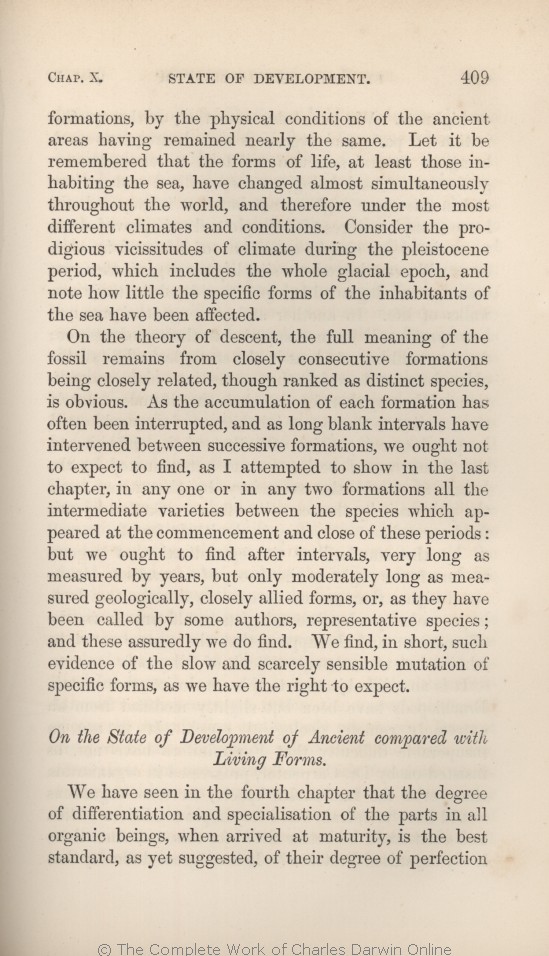consecutive formations, by the physical conditions of the ancient areas having remained nearly the same. Let it be remembered that the forms of life, at least those inhabiting the sea, have changed almost simultaneously throughout the world, and therefore under the most different climates and conditions. Consider the
prodigious | prodigious 1859 1861 1866 1869 1872 | | pro- digious 1860 |
| epoch, 1869 1872 | | period, 1859 1860 1861 1866 |
|
|
On the theory of descent, the full meaning of the
..| ..... 1869 1872 | | fact of 1859 1860 1861 1866 |
| formations 1869 1872 | | formations, 1859 1860 1861 1866 |
| being closely related, though ranked as distinct species, 1869 1872 |
| though ranked as distinct species, being closely related, 1859 1860 1861 1866 |
| in any two 1866 1869 1872 |
| two 1859 1860 1861 |
| formations 1859 1860 1861 1866 1869 | | formations, 1872 |
| periods: 1869 1872 | | periods; 1859 1860 1861 1866 |
| assuredly we 1866 1869 1872 | | we assuredly 1859 1860 1861 |
| mutation 1859 1860 1861 1866 1869 | | mutations 1872 |
| the 1869 1872 | | a just 1859 1860 1861 1866 |
| expect. 1866 1869 1872 | | expect 1859 1860 1861 |
| ..... 1866 1869 1872 | | to 1859 1860 1861 |
| ..... 1866 1869 1872 | | find. 1859 1860 1861 |
|
On
|
On
1859 1860 1861 1869 | |
On
1866 1872 |
|
the
1859 1860 1861 1869 | |
the
1866 1872 |
|
State
1861 1869 | |
state
1859 1860 | |
State
1866 1872 |
|
of
1859 1860 1861 1869 | |
of
1866 1872 |
|
Development
1859 1860 1861 1869 | |
Development
1866 1872 |
|
of
1859 1860 1861 1869 | |
of
1866 1872 |
|
Ancient
1859 1860 1861 1869 | |
Ancient
1866 1872 |
|
compared with Living Forms.
1869 |
|
Forms
.—
1859 1860 |
|
compared with Living Forms.
—
1861 |
|
compared with Living Forms. 1866 |
|
compared with Living Forms
. 1872 |
|
We have seen in the fourth chapter that the degree of differentiation and specialisation of the parts
in
all | all 1861 1866 1869 | all 1872 |
| arrived at 1866 1869 1872 | | come to 1861 |
|









